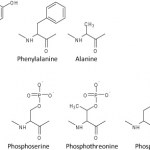integrins
In honor of the great Scienceblogs migration, and inspired by Ethan's wonderful post about the migration of the universe, I thought I would talk about something on a smaller scale: cell migration.
The scale is small, but the problem is huge. Most of your organs are locked in place - your heart never needs to be in your thigh - but the immune system has to be everywhere. When you cut your toe, breathe a virus into your lungs or eat a piece of contaminated spinach, the immune system needs to be johnny-on-the-spot with the inflammatory response.
Thankfully, there's already an organ system that…
When doing science, there's generally one totally optimal way of performing an experiment. But, there may also be several other less optimal means of gathering similar data, and one of those may be much more feasible than the totally optimal method. As a scientist, you have to determine whether this other method is sufficient, or whether it's necessary to expend the extra effort and/or resources on the more difficult method. Sometimes it's totally fine to take the simpler approach (and this will spare some of your precious time and your lab's precious funding), but this post is about a case…
Just as I was in the process of finishing my doctorate in August, I found out that my first first-author paper had been accepted for publication by The EMBO Journal. This was good news, because we were reporting some pretty fundamental findings in a relatively saturated field, and one of our competitors had managed to successfully stall the acceptance of this paper since March. Up until that point, witnessing this happen firsthand had been a somewhat frustrating and disillusioning experience for a young scientist, but I think that we were vindicated in the end. Anyway, this paper--and another…
Cells in higher organisms exist in a dynamic environment, requiring the ability to alternately grasp and disengage from the three-dimensional web of their surroundings. One family of proteins in particular, the integrins, plays a key role in this process by acting as the hands of the cell. Spanning the cell membrane, they link the extracellular matrix to the cell's internal cytoskeleton. Integrins are especially interesting, though, because the cell uses them to uniquely pass signals in both directions across the membrane, and an integrin's adhesiveness for the extracellular matrix can be…
The New York Times reported yesterday that "scientists find new receptor for HIV," referring to a paper published online in Nature Immunology on Sunday by Arthos et al. This is basically correct, although it would be more accurate to call the new receptor a co-receptor, since the infection of a cell with HIV still depends on the primary receptor, CD4, in combination with either CCR5 or CXCR4. The newly-identified co-receptor, just like the other HIV receptors, is a protein located on the surface of white blood cells (T-cells, specifically). HIV, like any other virus, can only replicate…
An individual cell inside the human body is in a dynamic environment: it not only has to anchor itself to its surroundings but also be able to communicate with them and respond as appropriate. One group of proteins--the integrins--play a central role in all of these tasks. The integrins are large (about 200,000 Da) membrane-spanning proteins, and each integrin consists of two subunits (alpha and beta). The vast majority of the integrin is located on the exterior of the cell, where it anchors the cell to the extracellular matrix. Each subunit has a short tail inside of the cell, and the…
Via A Blog Around the Clock comes news that Daniel Rhoads, who writes the informative blog Migrations (and formerly A Concerned Scientist), has successfully defended his dissertation. So, after a few minor revisions, it looks like it won't be too long before we'll have to call him Dr. Rhoads.
In good blogger form, Daniel has published the first chapter of his dissertation online. The title of the chapter is "Integrin receptors and determinants of polarity in directed cell migration," and it looks like a nice overview of the subject. As someone who used to study cell migration in blood…

